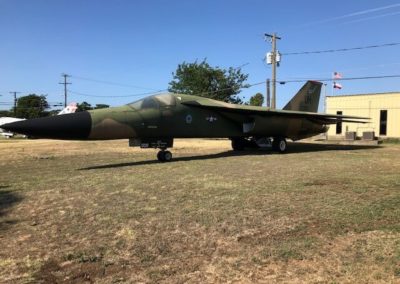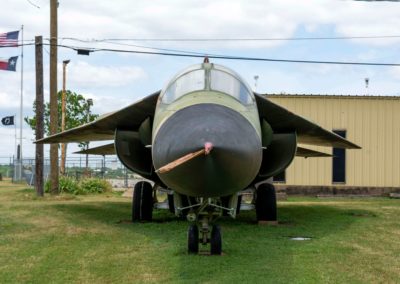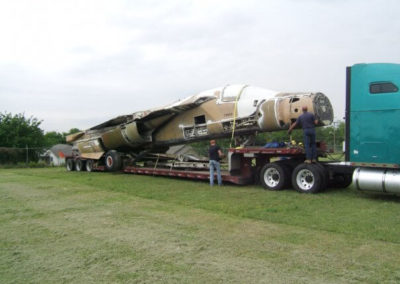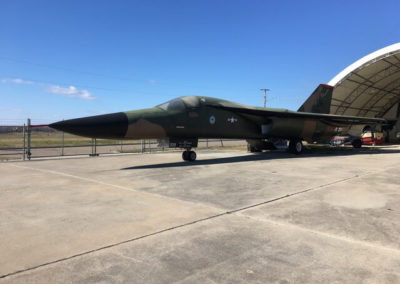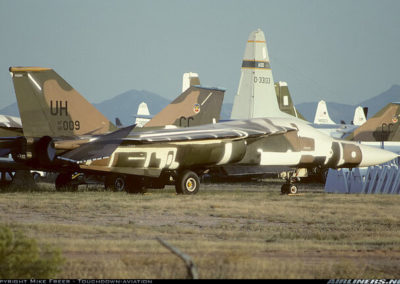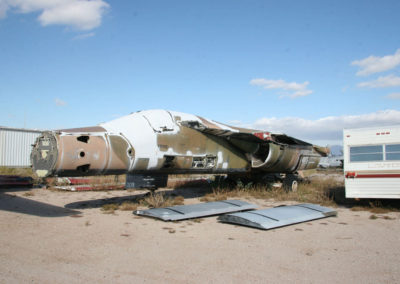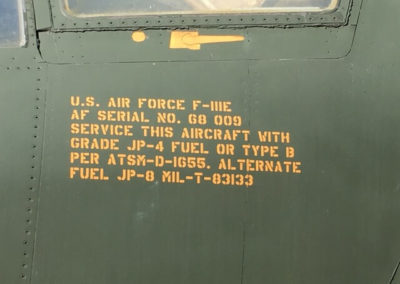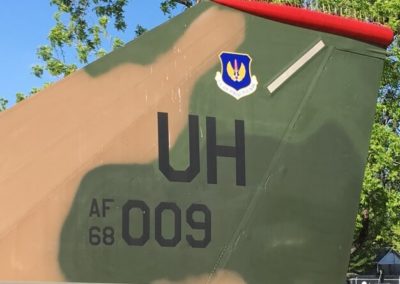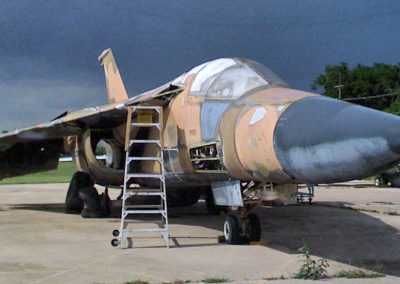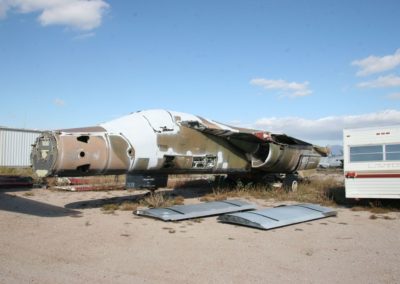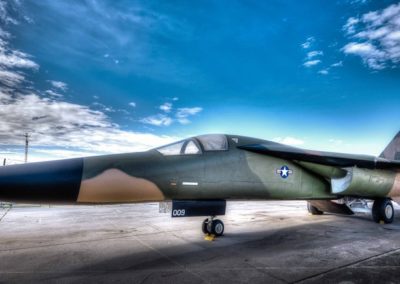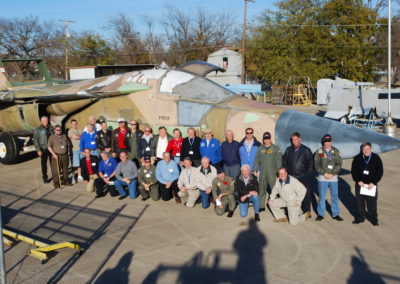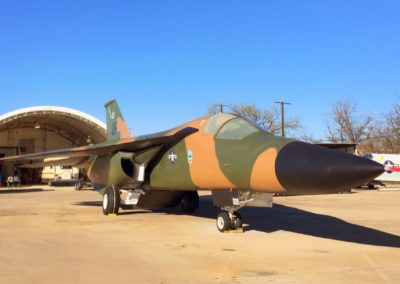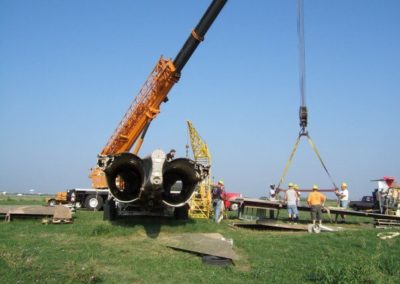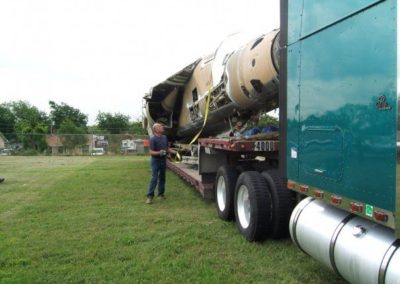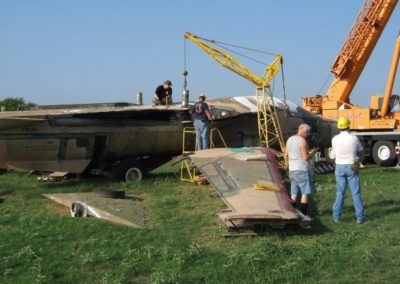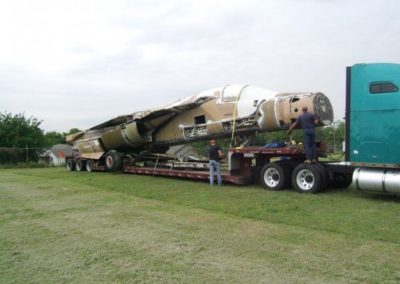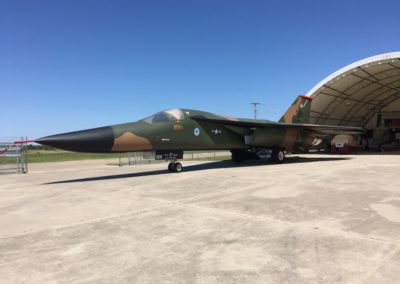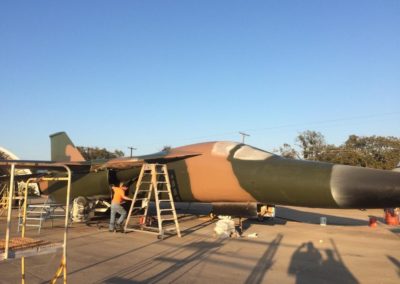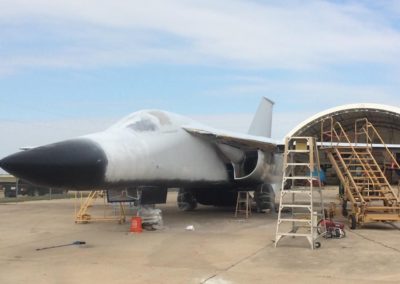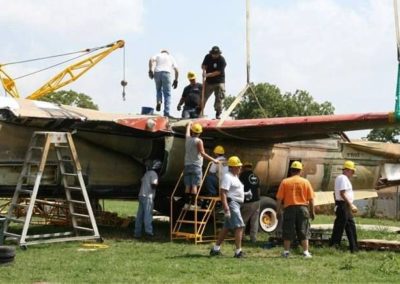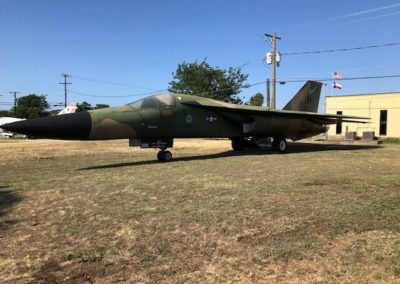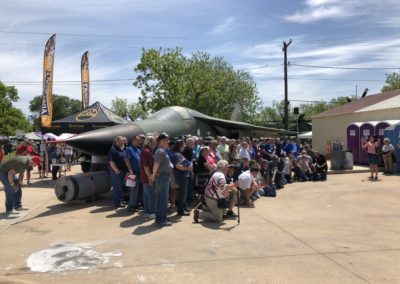F-111E Aardvark
The Fort Worth Aviation Museum’s F-111E was Air Force serial number 68-0009. It was constructed by General Dynamics (c/n A1-178, E-19) here in Fort Worth, Texas.
Warbird Overview
The Fort Worth Aviation Museum’s F-111E was Air Force serial number 68-0009. It was constructed by General Dynamics (c/n A1-178, E-19) here in Fort Worth, Texas. It is there where it received it’s nickname “Balls 9” as the Air Force serial number depicts zeros and a “9.” It was accepted by the Air Force on November 10, 1969. It was first assigned to the 27th Tactical Fighter Wing, Tactical Air Command, at Cannon Air Force Base, New Mexico. It was then assigned to the 20th Tactical Fighter Wing “Gamblers,” US Air Forces Europe, beginning in January 1971. It carried the tail code “UH” as it was based at RAF Upper Heyford, Great Britain, for just over 21 years. During this time, the aircraft was seen in the markings of the 77th Tactical Fighter Squadron (TFS) and possibly the 79th TFS.
ABOUT THE F-111E AARDVAKI
The Fort Worth Aviation Museum’s F-111E was Air Force serial number 68-0009. It was constructed by General Dynamics (c/n A1-178, E-19) here in Fort Worth, Texas. It is there where it received it’s nickname “Balls 9” as the Air Force serial number depicts zeros and a “9.” It was accepted by the Air Force on November 10, 1969. It was first assigned to the 27th Tactical Fighter Wing, Tactical Air Command, at Cannon Air Force Base, New Mexico. It was then assigned to the 20th Tactical Fighter Wing “Gamblers,” US Air Forces Europe, beginning in January 1971. It carried the tail code “UH” as it was based at RAF Upper Heyford, Great Britain, for just over 21 years. During this time, the aircraft was seen in the markings of the 77th Tactical Fighter Squadron (TFS) and possibly the 79th TFS.
After retirement, “Balls 9” was transferred to AMARC as FV0093 on May 11, 1992, for storage. It remained in “the Boneyard” in Tucson, Arizona, until 2003. A museum in Connecticut acquired it but soon went out of business and “Balls 9” languished until 2007. The Fort Worth Aviation Museum discovered the aircraft in a salvage yard. With help from the B-36 Peacemaker Museum this aircraft was brought home to Fort Worth in 2008.
Fact #1
The F-111’s were designed with a special ejection capsule instead of ejection seats to protect the crew from high-speed ejection injuries.
Fact #2
These “fighters” were specifically designed to fly low and fast below the radar to deliver bombs on targets.
Fact #3
The F-111 is one of the only military aircraft that did not receive a nickname until after it went into service.
Manufacturer: General Dynamics
Crew: Two
Engines: Two Pratt & Whitney TF30-P3 turbofans; 18,500 lbs. thrust each in afterburner
Wingspan: 63 feet (extended); 31 feet, 11.5 inches (swept)
Length: 73 feet, 5.5 inches
Height: 17 feet, 6 inches
Weight: 46,172 pounds (empty); 98,850 pounds (max.)
Speed: 1,453 mph / Mach 2.5 (max.); 470 mph (cruise)
Range: 3,165 miles (with external fuel tanks)
Service Ceiling: 61,000 feet
Armament: One 20mm M61A1 Vulcan rotary cannon with 2,000 rounds of ammunition; up to 30,000 pounds of conventional or nuclear ordnance (internal and external)
The Fort Worth Aviation Museum’s F-111E was Air Force serial number 68-0009. It was constructed by General Dynamics (c/n A1-178, E-19) here in Fort Worth, Texas. It is there where it received it’s nickname “Balls 9” as the Air Force serial number depicts zeros and a “9.” It was accepted by the Air Force on November 10, 1969. It was first assigned to the 27th Tactical Fighter Wing, Tactical Air Command, at Cannon Air Force Base, New Mexico. It was then assigned to the 20th Tactical Fighter Wing “Gamblers,” US Air Forces Europe, beginning in January 1971. It carried the tail code “UH” as it was based at RAF Upper Heyford, Great Britain, for just over 21 years. During this time, the aircraft was seen in the markings of the 77th Tactical Fighter Squadron (TFS) and possibly the 79th TFS.
After retirement, “Balls 9” was transferred to AMARC as FV0093 on May 11, 1992, for storage. It remained in “the Boneyard” in Tucson, Arizona, until 2003. A museum in Connecticut acquired it but soon went out of business and “Balls 9” languished until 2007. The Fort Worth Aviation Museum discovered the aircraft in a salvage yard. With help from the B-36 Peacemaker Museum, this aircraft was brought home to Fort Worth in 2008. This aircraft is on loan from the US General Services Administration.
Aardvark needs a fresh wash up and cleaning. Some corrosion on under surfaces of horizontal stabs. Some fuselage touchups may be needed. Otherwise, paint is ok for this year.
Note: Scheduling is always a moving target depending on weather and workload. All schedules are subject to changes.
Become a Member!
FLIGHT SIMULATOR
Events
Events
HOURS
Saturday: 9AM-2PM
Sunday: 11AM-3PM
